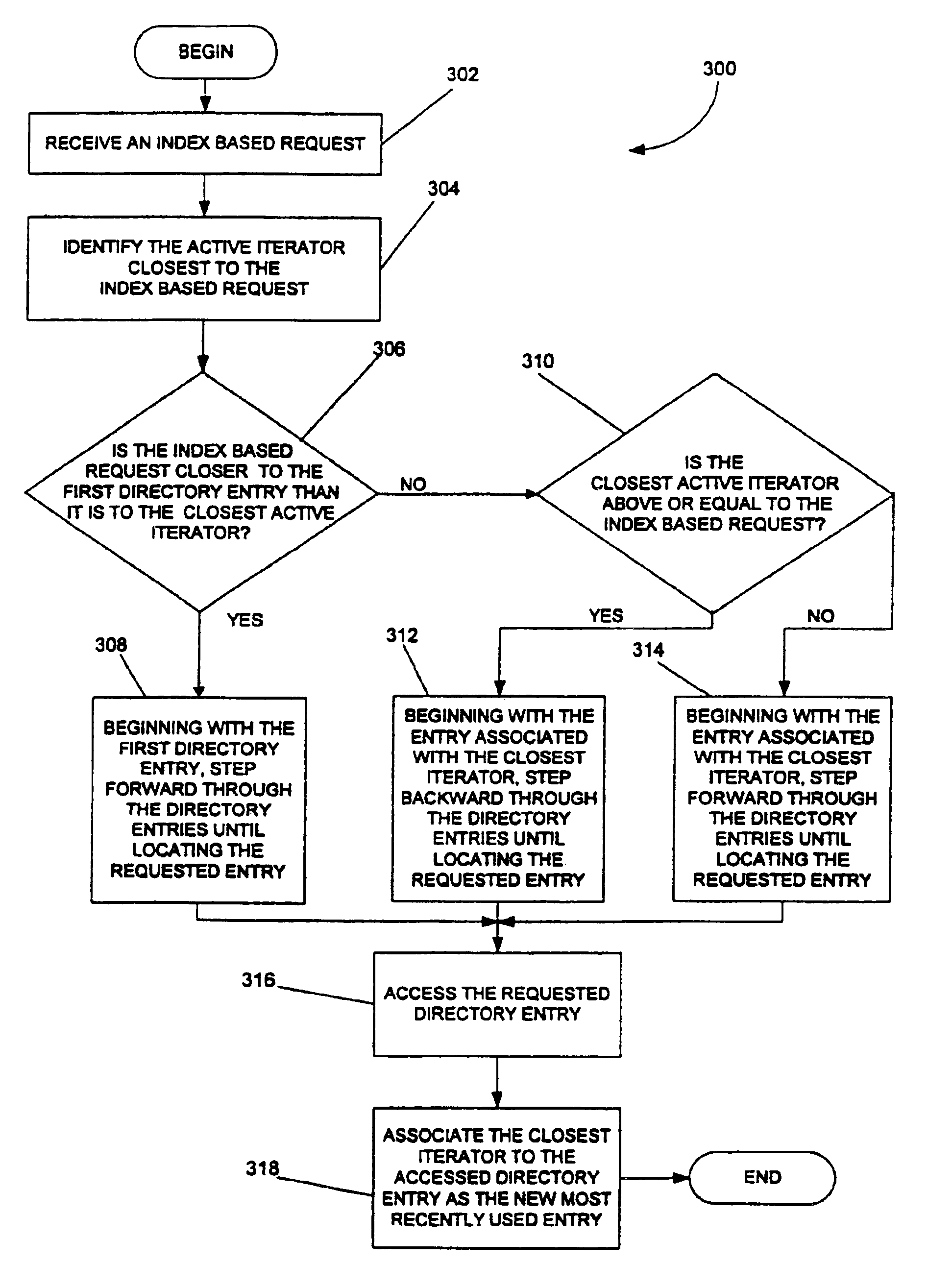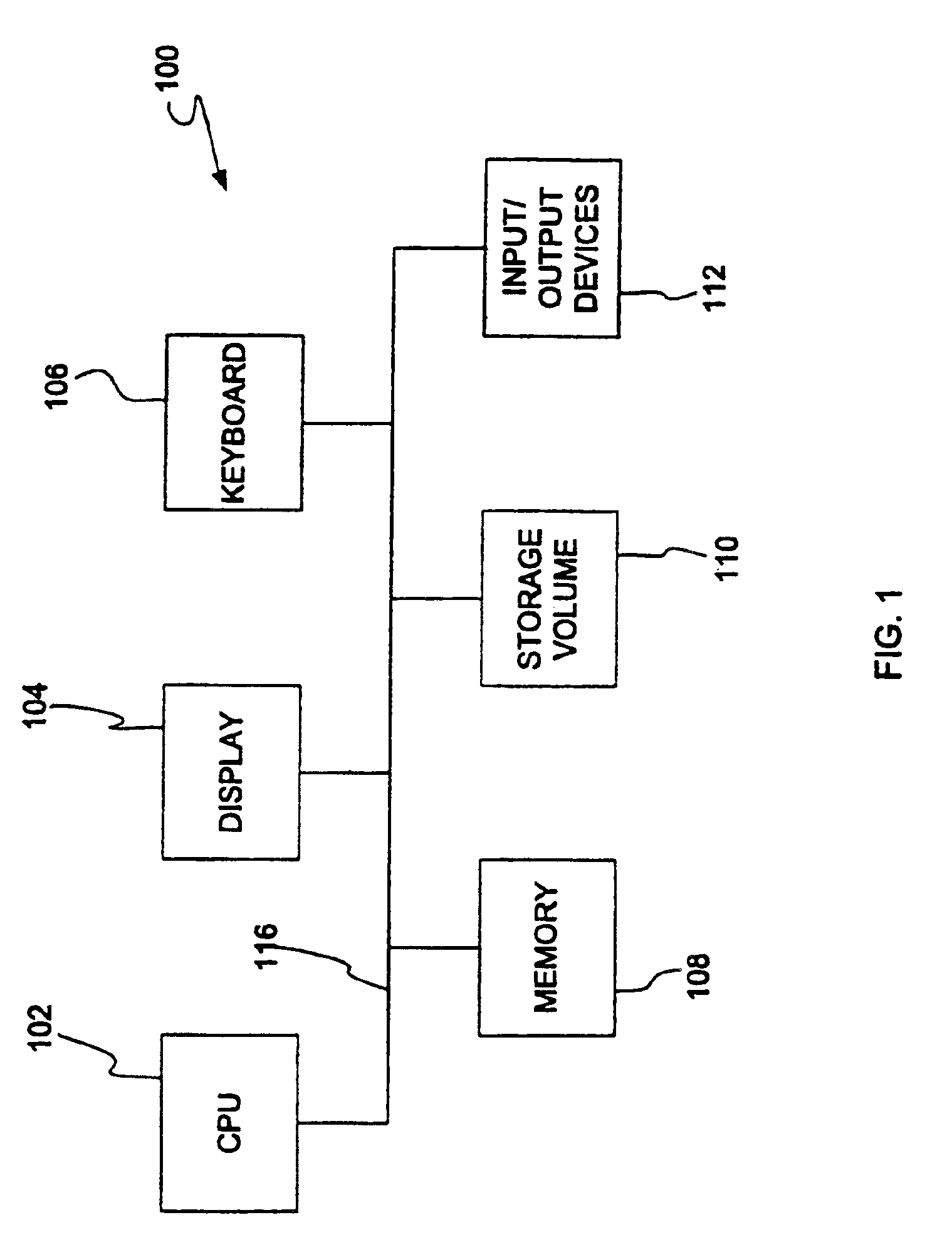System and method for interfacing index based and iterator based application programming interfaces
an application programming interface and iterator technology, applied in the field of interfacing index based and iterator based application programming interfaces, can solve the problems of limiting the number of clients, index based routines that merely record the mru index, and affecting the efficiency of implementation, so as to achieve efficient directory entry location and higher efficiency.
- Summary
- Abstract
- Description
- Claims
- Application Information
AI Technical Summary
Benefits of technology
Problems solved by technology
Method used
Image
Examples
Embodiment Construction
[0022]FIG. 1 shows a computer system 100 for interfacing index based and iterator based routines according to the present invention. Using the system 100, a directory entry may be accessed from an index based request using an iterator based routine. As illustrated, the system 100 includes a central processing unit (CPU)102, a display 104, a keyboard 106, a memory 108, a storage volume 110, and input / output devices 112 coupled via a bus 116.
[0023]FIG. 2 illustrates, in more detail, the memory 108 of FIG. 1. As shown, the memory 108 generally includes a computer software application 202, an index based API 204, an iterator based file manager 212, and a device driver 210. The iterator based file manager 212 further includes an iterator based API 208 and an iterator cache memory 206. The iterator cache memory 206 contains iterators, or objects, for a subset of the directories on the storage volume 110. The device driver 210 reads data from and writes data to the storage volume 110 (FIG....
PUM
 Login to View More
Login to View More Abstract
Description
Claims
Application Information
 Login to View More
Login to View More - R&D
- Intellectual Property
- Life Sciences
- Materials
- Tech Scout
- Unparalleled Data Quality
- Higher Quality Content
- 60% Fewer Hallucinations
Browse by: Latest US Patents, China's latest patents, Technical Efficacy Thesaurus, Application Domain, Technology Topic, Popular Technical Reports.
© 2025 PatSnap. All rights reserved.Legal|Privacy policy|Modern Slavery Act Transparency Statement|Sitemap|About US| Contact US: help@patsnap.com



